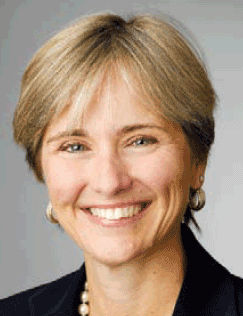2012 CEOs Who 'Get It'
Janet Froetscher, president and CEO, National Safety Council, introduces the 2010 CEOs Who "Get It"

The National Safety Council is proud to announce the 2012 CEOs Who “Get It.” This year’s honorees lead national and international organizations ranging in size from 90 to more than 100,000 employees. While they come from very diverse backgrounds and a variety of industries, they share certain traits that make them world-class safety leaders.
These CEOs understand the Journey to Safety Excellence philosophy and are creating a strong safety culture within their organizations. First and foremost, these leaders demonstrate an unwavering commitment to safety and are walking the talk. Rick Frost, CEO of Louisiana-Pacific Corp., when faced with difficult choices, puts safety first. His organization had three unrelated recordables across its manufacturing system of 35 mills in one week, and he directed his entire system to be shut down for a half-day to discuss the incidents – a decision estimated to cost nearly $1 million. This sent a very strong message to the entire organization that safety is more important than production.
Lt. Gen. Harry M. Wyatt III, Director of the Air National Guard, hosts an annual Executive Safety Summit where the core leadership and safety team gather to focus exclusively on safety and safety leadership. He also chairs a mishap review panel and personally reviews mishap recommendations and follow-up actions, while also chairing the Air National Guard Safety Investigation Board. Even with more than 100,000 staff, this leader personally gets involved in employee safety and well-being.
Brady Corp. is an international company with operations in 29 countries. Its president and CEO, Frank M. Jaehnert, says that dealing with differing laws and standards across the globe is one of the organization’s biggest obstacles. Jaehnert has established standardized work processes and working conditions for his entire workforce, viewing it as a matter of integrity. This involves installing air conditioning, guarding machines and exceeding pollution standards, even when it is well above a country’s norm. Wayne Livingston, president and CEO of Diverse Power Inc., engages his employees to take safety knowledge home to share with family and neighbors through the company’s “Safety@Home” campaign. Diverse Power also encourages employees to take their personal protective equipment home to use on household projects. The organization offers defensive driving and first aid courses free of charge to employees’ family members.
Coverage of this year’s CEOs Who “Get It’ begins with Andrew Liveris, chairman and CEO of The Dow Chemical Company – the 2012 recipient of the National Safety Council’s Green Cross for Safety Medal. Liveris encourages personal responsibility for safety by all employees through the iCommit program, which asks employees to think about what they could do to help Dow reach its zero-injury goal. Dow’s “Drive to Zero” safety initiative – zero injuries, zero incidents, zero near misses, zero spills and zero waste – means it is never fully satisfied with its performance. Dow looks to leading indicators such as near misses to find proactive measures to protect employees, the community and the environment.
These are only a few examples of management commitment displayed by the 2012 honorees. I encourage you to read all of the CEOs’ stories on the following pages to learn how they are engaging employees in safety at all levels, implementing safety management systems, continuously reducing risk and measuring their performance – critical components of the Journey to Safety Excellence philosophy.
Congratulations to these world-class leaders.
Janet Froetscher
President & CEO
National Safety Council
Post a comment to this article
Safety+Health welcomes comments that promote respectful dialogue. Please stay on topic. Comments that contain personal attacks, profanity or abusive language – or those aggressively promoting products or services – will be removed. We reserve the right to determine which comments violate our comment policy. (Anonymous comments are welcome; merely skip the “name” field in the comment box. An email address is required but will not be included with your comment.)

